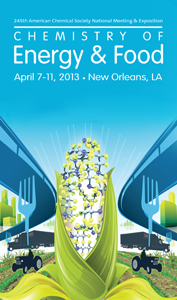It's all about chemistry
04/04/2013

LabLogic will be attending the 245th Annual Meeting of the American Chemical Society'’s Exposition in New Orleans between the 7th and 9th April 2013.
The American Chemical Society (ACS) is the world’s largest scientific society and one of the world’s leading sources and authorities in scientific information. The Society publishes numerous scientific journals and databases, convenes major research conferences and provides educational, science policy and career programmes in chemistry.
Twice annually, the ACS sponsors a national meeting – five days of symposia, tutorials, and poster sessions that cover every area of chemistry, chemical engineering and related sciences. More than 10,000 scientists will attend each meeting to present new multidisciplinary research, participate in more than 8,000 presentations and network with colleagues.
LabLogic’s Dr Tom Deakin will be making a presentation at the event, discussing the development of the new Wilma On-line Water Monitoring System as part of the ‘Radiochemistry and risk assessment of food and water contaminated with radionuclides’ symposium. His talk will be taking place on the 10th April between 11.05 am and 11.30 am in Riverside III at the Hampton Inn & Suites Convention Center.
The Wilma system will also be on show at the accompanying exposition which runs alongside the scientific meeting. More than 250 companies will be exhibiting at the event and LabLogic will be right in the midst of it on booth #1329.
The Hidex Sense Microplate Reader will also be making its debut at the show. The Sense is a new generation of microplate reader loaded with unique innovative features that make it one of the most user-friendly instruments currently on the market. It offers great flexibility combined with high performance and is capable of fluorescence intensity, TRF, fluorescence polarisation, luminescence, and absorbance with a wavelength scanning function. In addition, Hidex's new and improved optics and light guides allow for measurements of the highest sensitivity in each mode. Indeed, with so much technology packed into such a compact instrument, no laboratory should be without one.